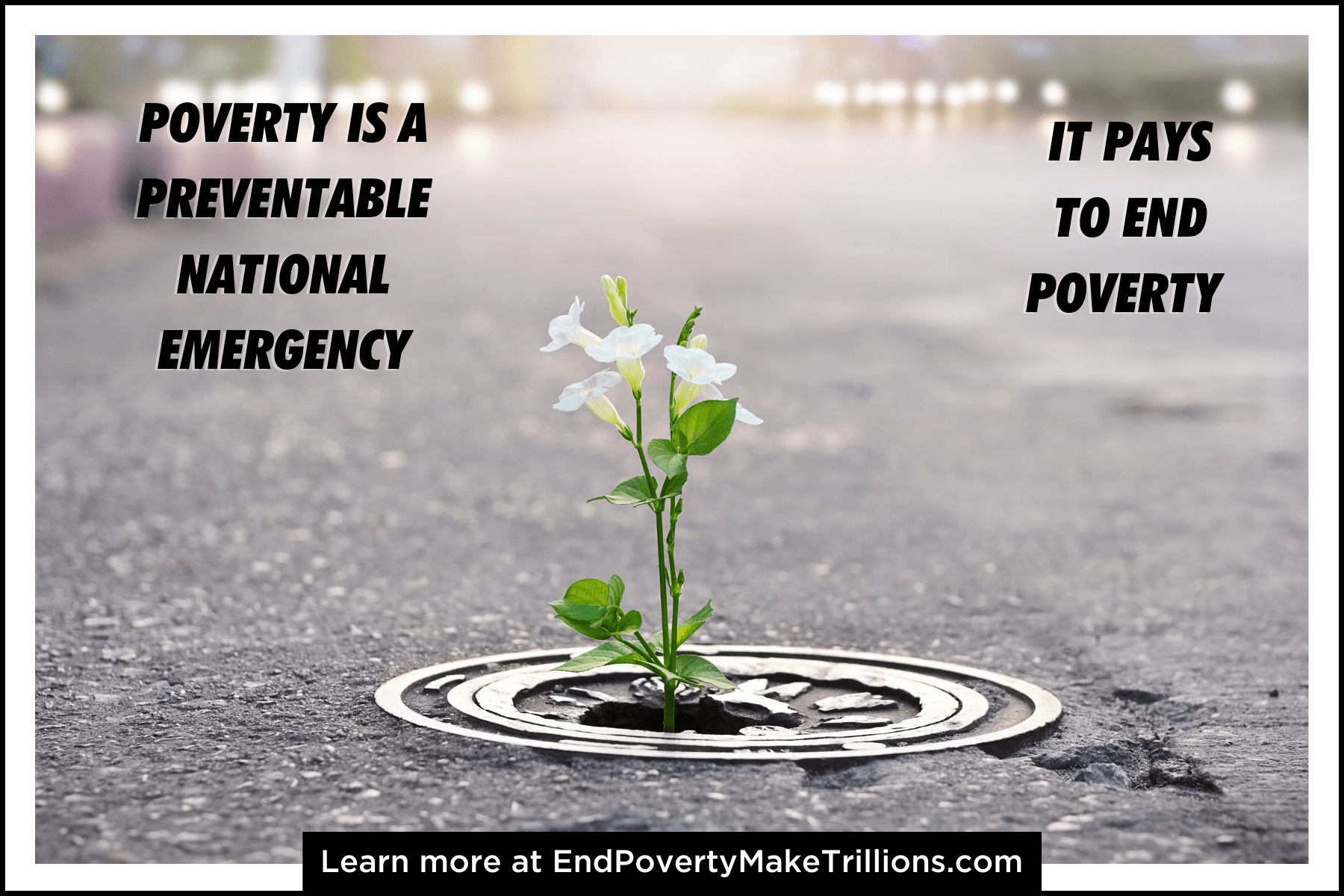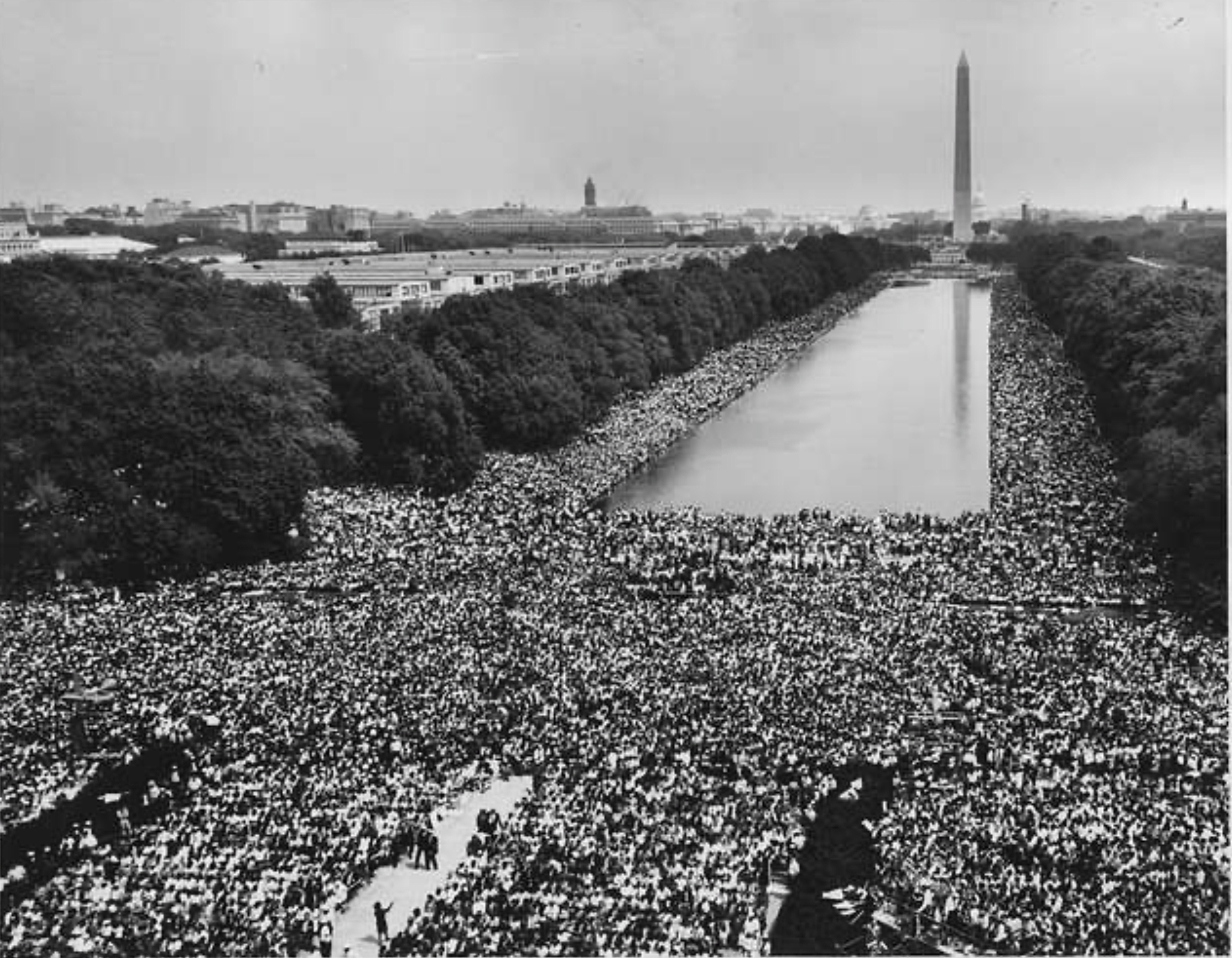
It Pays to End Poverty
Are you ready to end poverty?
This piece is written by End Poverty Make Trillions and may not reflect the official position of Causes.com.
It pays
- Each year, the U.S. invests trillions of dollars in reducing poverty. As a nation, we fund programs that attempt to alleviate symptoms of poverty such as poor health, poor nutrition, poor educational outcomes, homelessness, crime, lack of opportunity, and lack of hope. Within those 12 months, 172,000 people die due to poverty.
- Albert Einstein defined insanity as doing the same thing over and over and expecting different results. After over 100 years of waiting for welfare programs to end poverty, it may be time to label these expectations as nonsensical.
- Poverty is a preventable national emergency. Our sense of common humanity, or a fiscal bottom line, can motivate us to end poverty.

The new paradigm of efficiency
- While America is a nation of prosperity, many people struggle to have a home, enough to eat, and access to healthcare. Poverty is an equal opportunity oppressor as every race and demographic are affected.
- According to a recent study, 64 percent of hardworking Americans live paycheck to paycheck. Millions of kids go to school hungry. In 2019, more than 1 in 7 children, or over 10 million, were food insecure. Direct economic relief, set to the federal poverty guidelines, moves the power back to the American people to move out of economic disparity and into economic autonomy.
- Old paradigms rooted in our bureaucracy have proven ineffective and demand a new solution. Poverty can only be solved through money funneled into struggling places – direct funding eliminates poverty immediately.
Explanation of the solution
- The proposed Seed Money Act guarantees that every American household will be given seed money equal to the poverty line. The seed money will be distributed in 24 installments on the 1st and 15th of each month. Seed money does not count as earned income, cannot be taxed, cannot be garnished, and except for acts of terrorism, cannot be taken away by the government for any reason. It is an unconditional investment in every single American.
- The Seed Money Act is paired with a repayment plan that recoups the investment as individuals work and earn money. Households that make above the poverty line would pay their seed money back through taxes. Instead of costing $2-3 trillion to implement, the Seed Money Act only costs taxpayers $200 billion to completely eradicate poverty, based on U.S. census data.
The bottom line
- All we have to do to end poverty in the U.S. is make a seed investment in every American household, and then for those that can afford to repay it, we tax that seed investment back. Direct funding immediately moves individuals and families out of poverty and creates a safety net for those that fall on hard times.
- The net cost to end poverty in this fashion totals about $200 billion per year. Therefore, a $200 billion a year investment yields an annual return of over 400% from childhood poverty alone. In comparison, the average annual stock market return since 1929 has been 9.6%.
What do you think? Are you ready to end poverty?
-Darryl W. Finkton Jr.
The Latest
-
 Changes are almost here!It's almost time for Causes bold new look—and a bigger mission. We’ve reimagined the experience to better connect people with read more...
Changes are almost here!It's almost time for Causes bold new look—and a bigger mission. We’ve reimagined the experience to better connect people with read more... -
 The Long Arc: Taking Action in Times of Change“Change does not roll in on the wheels of inevitability, but comes through continuous struggle.” Martin Luther King Jr. Today in read more... Advocacy
The Long Arc: Taking Action in Times of Change“Change does not roll in on the wheels of inevitability, but comes through continuous struggle.” Martin Luther King Jr. Today in read more... Advocacy -
 Thousands Displaced as Climate Change Fuels Wildfire Catastrophe in Los AngelesIt's been a week of unprecedented destruction in Los Angeles. So far the Palisades, Eaton and other fires have burned 35,000 read more... Environment
Thousands Displaced as Climate Change Fuels Wildfire Catastrophe in Los AngelesIt's been a week of unprecedented destruction in Los Angeles. So far the Palisades, Eaton and other fires have burned 35,000 read more... Environment -
 Puberty, Privacy, and PolicyOn December 11, the Montana Supreme Court temporarily blocked SB99 , a law that sought to ban gender-affirming care for read more... Families
Puberty, Privacy, and PolicyOn December 11, the Montana Supreme Court temporarily blocked SB99 , a law that sought to ban gender-affirming care for read more... Families

 Climate & Consumption
Climate & Consumption
 Health & Hunger
Health & Hunger
 Politics & Policy
Politics & Policy
 Safety & Security
Safety & Security
